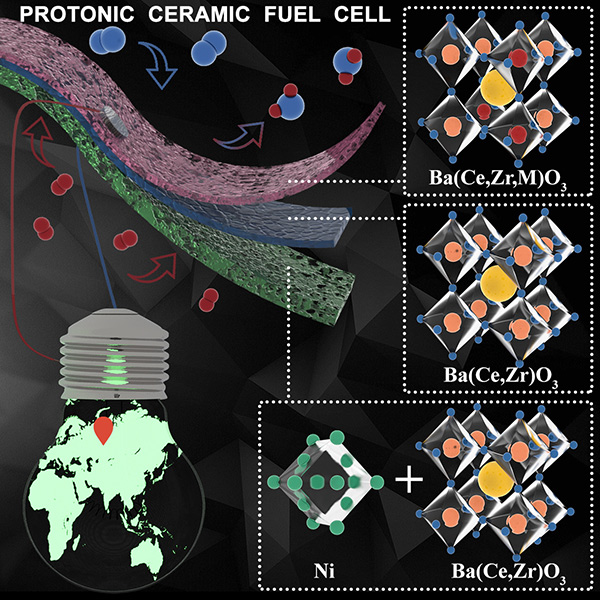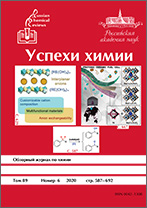|
Эта публикация цитируется в 87 научных статьях (всего в 87 статьях)
$\mathrm{Ba}(\mathrm{Ce},\mathrm{Zr})\mathrm{O}_3$-based electrodes for protonic ceramic electrochemical cells: towards highly compatible functionality and triple-conducting behavior
Anna V. Kasyanovaab, Liana R. Tarutinaa, Anna O. Rudenkoa, Julia G. Lyagaevaab, Dmitry A. Medvedevab
a Institute of High-Temperature Electrochemistry, the Ural Branch of the Russian Academy of Sciences, Yekaterinburg
b Ural Federal University named after the First President of Russia B. N. Yeltsin, Ekaterinburg

Аннотация:
Protonic ceramic fuel cells and electrolysis cells represent low- and intermediate-temperature electrochemical devices, which allow chemical-to-electrical energy conversion with very high efficiency and low environmental impact. In order to ensure the long-term operability of these devices, as well as to provide for their up-scaling, a number of existing challenges associated with chemical and thermal incompatibilities pertaining to the functional materials remain to be overcome. This work presents a comprehensive overview of new electrode materials based on barium cerate/zirconate. The structural fragments of these materials are similar to those of the proton-conducting $\mathrm{Ba}(\mathrm{Ce},\mathrm{Zr})\mathrm{O}_3$ electrolytes, which causes superior chemical compatibility between different functional materials. The primary emphasis of the research is on the functional properties of these materials such as chemical stability, thermal expansion behaviour and transport features. This in turn determines the electrochemical performance of the designed electrodes. In addition, the possibility of obtaining triple-conducting materials is discussed as means of designing electrodes with a high electrochemical active surface area required for the design of high-performance protonic ceramic fuel and electrolysis cells.
The bibliography includes 208 references.
Ключевые слова:
.
Поступила в редакцию: 06.11.2019
Образец цитирования:
Anna V. Kasyanova, Liana R. Tarutina, Anna O. Rudenko, Julia G. Lyagaeva, Dmitry A. Medvedev, “$\mathrm{Ba}(\mathrm{Ce},\mathrm{Zr})\mathrm{O}_3$-based electrodes for protonic ceramic electrochemical cells: towards highly compatible functionality and triple-conducting behavior”, Усп. хим., 89:6 (2020), 667–692; Russian Chem. Reviews, 89:6 (2020), 667–692
Образцы ссылок на эту страницу:
https://www.mathnet.ru/rus/rcr4298 https://www.mathnet.ru/rus/rcr/v89/i6/p667
|


|






 Обратная связь:
Обратная связь: Пользовательское соглашение
Пользовательское соглашение
 Регистрация посетителей портала
Регистрация посетителей портала Логотипы
Логотипы







 Цитирование в формате
Цитирование в формате 
